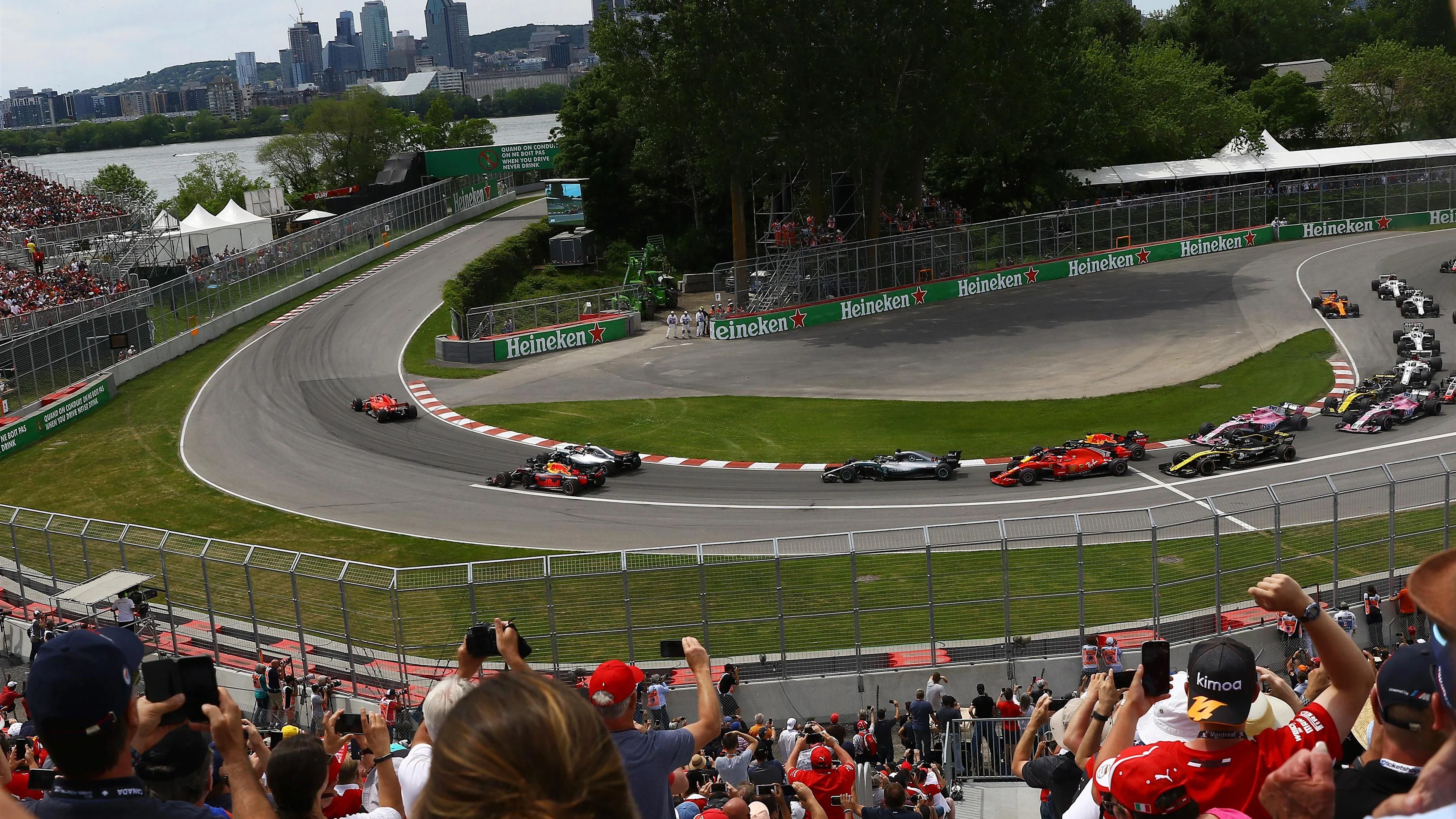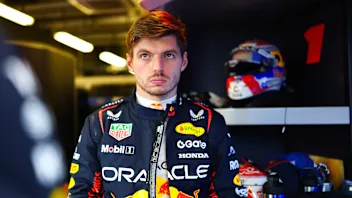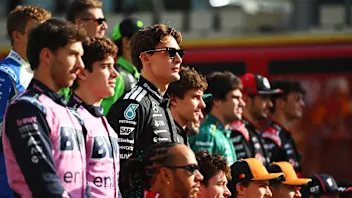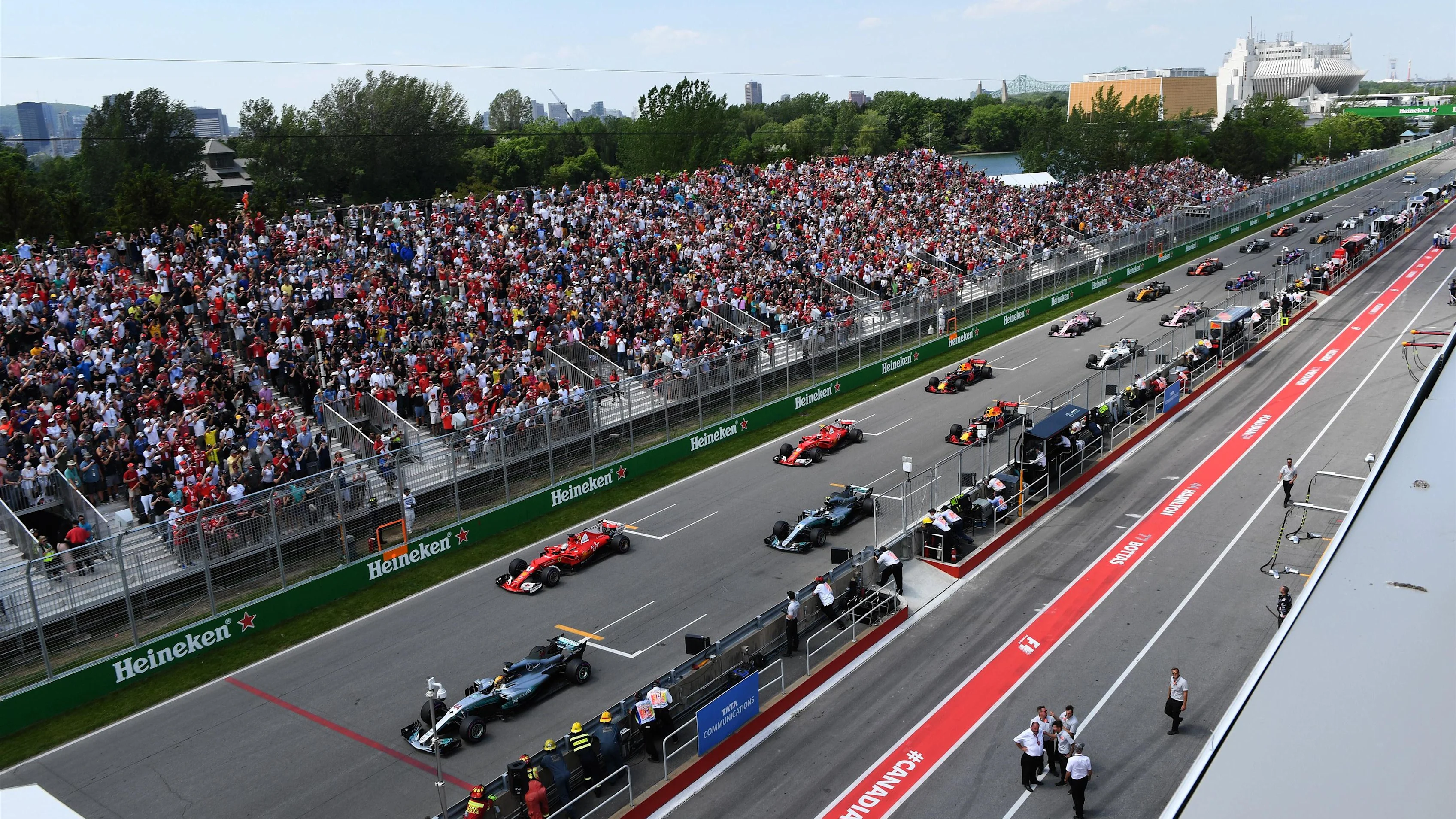The so-called 'European season' might be just two races old, but it’s time to make a very popular trip across the Atlantic for the Canadian Grand Prix. Here's why we love going racing in Montreal…
1. The circuit is made for overtaking
The Canadian Grand Prix has been the scene of some epic races, and that’s thanks in part to a circuit layout that challenges drivers and provides overtaking opportunities. Broken down into its most basic form, the Circuit Gilles-Villeneuve is essentially straights and chicanes - plus one hairpin - so there are plenty of opportunities for slipstreaming, and big braking zones.
The best passing opportunity comes ahead of the final corner, with a long run out of the hairpin that can see a following car pick up a tow. And even if they don’t get close enough to make the move stick into that last chicane, there’s another opportunity under braking for Turn 1.
But those aren’t the only locations for moves. The hairpin itself is a big enough braking zone to see drivers willing to take a lunge. And with concrete walls waiting on the outside of most corners, the slightest mistake can be punished. But one wall has a habit of standing out above the rest…
2. The 'Wall of Champions' is a constant threat
The final chicane is a tricky enough corner as it is, with cars decelerating from over 300km/h for a tight right-left with big kerbs on each apex if they get it slightly wrong. But on the exit, there’s an iconic piece of track.
In trying to carry as much speed as possible through the corner and onto the pit straight, drivers have to get as close to the barrier as possible. Time can be won and lost in this corner, and a whole lap can be ruined right at the end if they get it wrong.
In 1999 alone, no fewer than three drivers’ champions hit the wall on the outside of the final corner. Home hero Jacques Villeneuve was joined by Michael Schumacher and Damon Hill in crunching the concrete.
Villeneuve had actually already done so in 1997, too, and since then, others such as Sebastian Vettel and Jenson Button have hit the wall. It’s not just limited to past or future champions, of course, with race-winners Rubens Barrichello, Juan Pablo Montoya, Ralf Schumacher and Pastor Maldonado also falling foul of the final chicane.
3. Cars always get pushed to the limit
Not only do the drivers sometimes struggle with the Circuit Gilles-Villeneuve, their equipment can find it hard going as well. With lots of long straights and big stops, plenty of emphasis is placed on power unit performance and braking.
By the end of the race, brakes can be a problem as drivers struggle to slow their cars, which is disconcerting at the best of times, let alone when there’s a wall waiting on the exit of so many corners.
While the left pedal is getting worked hard, so too the right pedal is crucial as drivers spend so much of the lap at full throttle. As a result, Canada is often a venue where teams introduce a power unit upgrade in search of more straight-line performance.
This year, Ferrari brought their power unit upgrade forward by two races to Barcelona, but will be hoping to exploit their straight-line speed advantage, and it remains to be seen if Mercedes, Renault or Honda have opted for an update to counter the Scuderia’s threat.
4. The fans are ALWAYS noisy

At present, North and Central American Formula 1 fans only have three races on their continent, and with the United States and Mexico paired back-to-back late in the season, Canada stands alone in June.
That means spectators travel in huge numbers to Montreal for the race weekend, and as we’ve seen from North American sports fans so many times, they’re going to make themselves heard. The atmosphere produced at the Circuit Gilles-Villeneuve is one of the best of the season, with packed grandstands surrounding Turn 2 and the hairpin usually seeing plenty of action.
Support is strong for all of the teams, and the bridge onto the Ile Notre-Dame is always full of fans wearing a wide variety of team kit - current and old - as they file into the circuit, hoping to shout some words of encouragement to any drivers arriving at the same time.
5. The city rocks
The fans flood to Montreal because not only is the event at the track so spectacular, but the city itself is an awesome place to be.
Downtown in Canada’s second-largest city is just across the Saint Lawrence River in which the Ile Notre-Dame sits, and it’s an eclectic venue.
While the old town offers up cobbled streets, cosy bars and cafes, classy restaurants and stunning architecture such as the Notre-Dame Basilica, there’s also the business district, a lively nightlife scene and the imposing Mont Royal itself that overlooks the city.
Montreal comes alive with F1-specific events during race week, and at different locations fans can take in live music as well as activities like a pit stop challenge, as the city really embraces the Grand Prix.
And from a wider sporting point of view, Montreal Impact ply their trade at Saputo Stadium by the Olympic Park - itself with links to the circuit location as another host site in 1976 - and the Montreal Alouettes CFL team are also in pre-season action around the time of the race.

Next Up
Related Articles
 Haas single out big challenge of 2026 car
Haas single out big challenge of 2026 car.webp) 20 of the most exciting talents on the road to F1 in 2026
20 of the most exciting talents on the road to F1 in 2026/SI202601151062%20(1).webp) Check out every angle of Racing Bulls’ 2026 livery
Check out every angle of Racing Bulls’ 2026 livery Verstappen names his most difficult season in F1
Verstappen names his most difficult season in F1 REVEALED: The best driver line-up for 2026 as voted for by you
REVEALED: The best driver line-up for 2026 as voted for by you.webp) Ocon thinks Haas can be ‘dangerous’ in 2026
Ocon thinks Haas can be ‘dangerous’ in 2026

